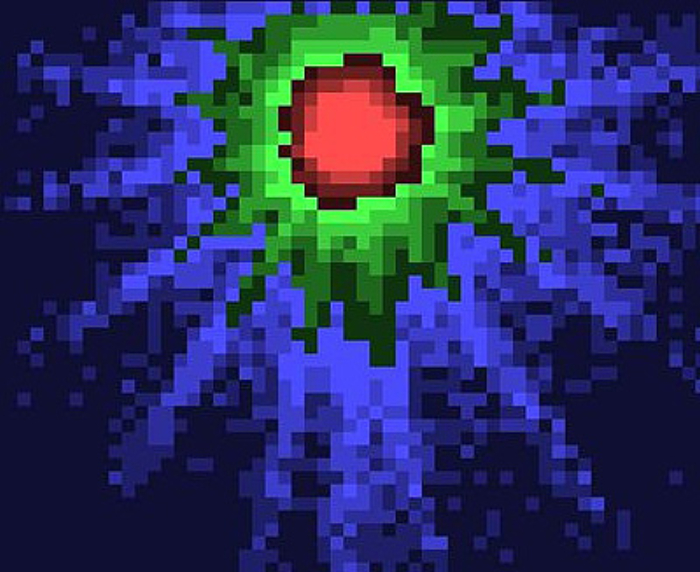
 Credit: Andrea Tiengo & Sandro Mereghetti (INAF); ESA
Credit: Andrea Tiengo & Sandro Mereghetti (INAF); ESA
Exotic, but not too Exotic?
There are probably 100 million to 1 billion stellar corpses called neutron stars in the Milky Way galaxy. Only a small fraction of these are detectable. Some neutron stars signal there presence by high frequency radio or X-ray pulsations, some by large X-ray brightness compared to very faint optical brightness. The ROSAT X-ray satellite found 7 peculiar X-ray emitting objects which have come to be known as the "Magnificent Seven". The Magnificent Seven are believed to be isolated neutron stars, and if so they would represent the tip of the neutron star iceberg. The brightest of these seven, an object called RX J1856.5-3754, is quite peculiar: it's nearby (about 500 lightyears away), it's relatively cool (with a temperature of about 700,000 degrees centigrade) and has a small radius (only about 4 km, about half that expected). Unlike other neutron stars, no X-ray pulsations were ever identified by X-ray observatories. This fact, coupled with the small derived size of the neutron star, caused some astronomers to speculate that RX J1856.5-3754 was an exotic
"quark star", a star so dense that its matter would be stripped into bare quarks. Recently however, astronomers used the sensitive X-ray detectors on the XMM-Newton X-ray Observatory to reveal that indeed RX J1856.5-3754 did show X-ray pulsations, although the pulsations were so small other X-ray observatories did not find them. The X-ray pulsations suggest that RX J1856.5-3754 is composed of "normal" neutron star material - whatever that is.
<
HEA Dictionary ● Archive
● Search HEAPOW
● Other Languages
● HEAPOW on Facebook
● Download all Images
● Education ● HEAD
>
Each week the HEASARC
brings you new, exciting and beautiful images from X-ray and Gamma ray
astronomy. Check back each week and be sure to check out the HEAPOW archive!
Page Author: Dr. Michael F. Corcoran
Last modified Monday, 26-Feb-2024 17:22:36 EST


